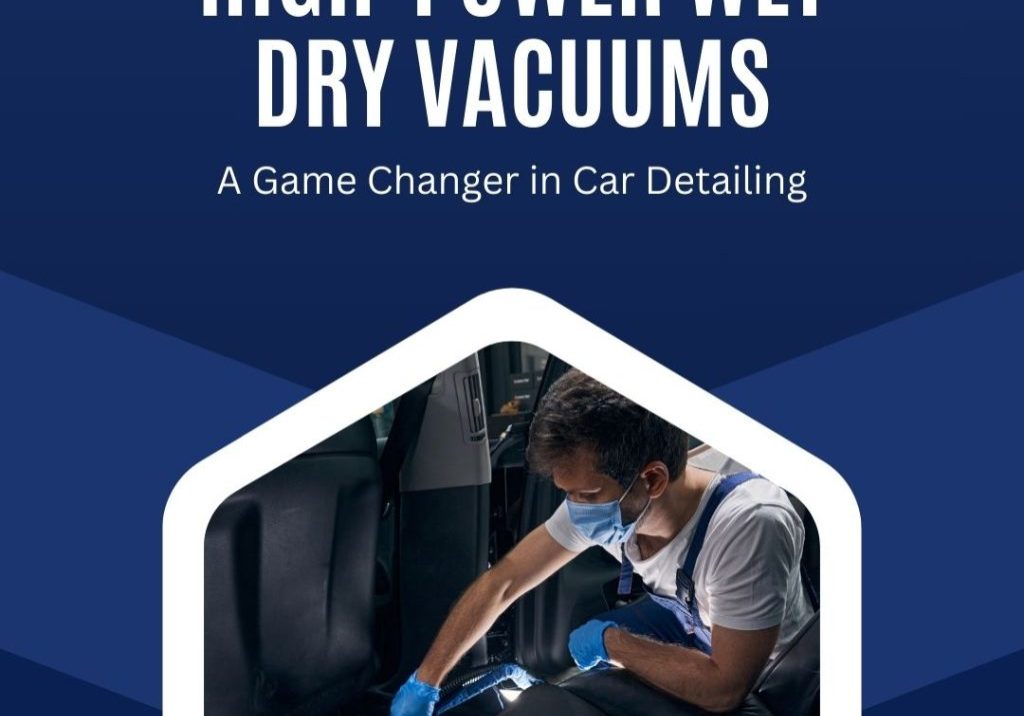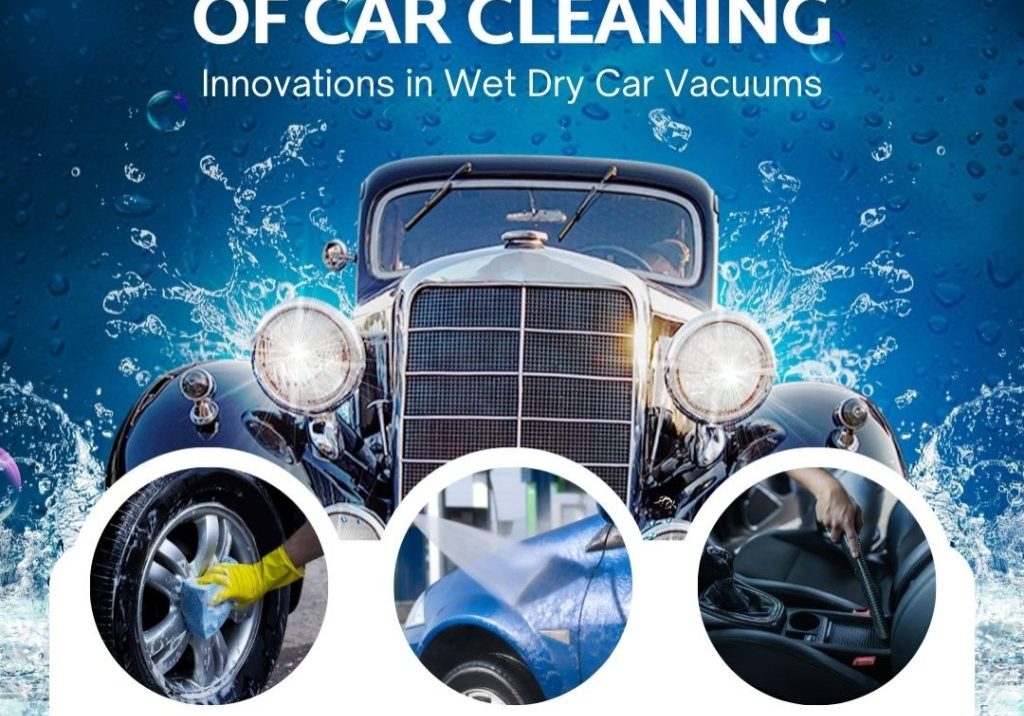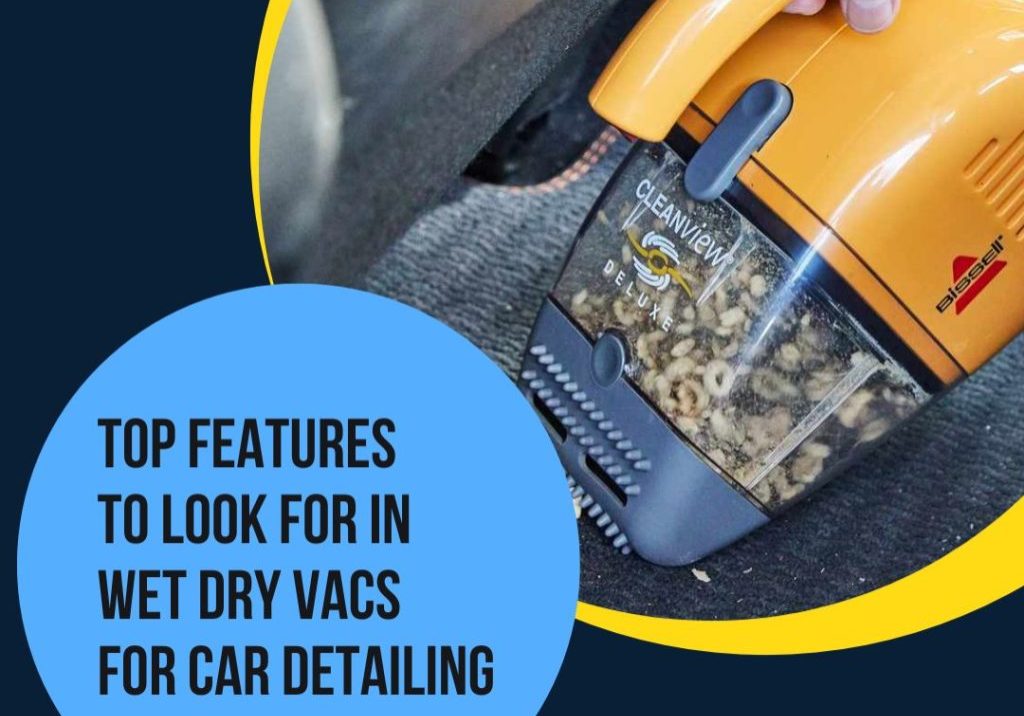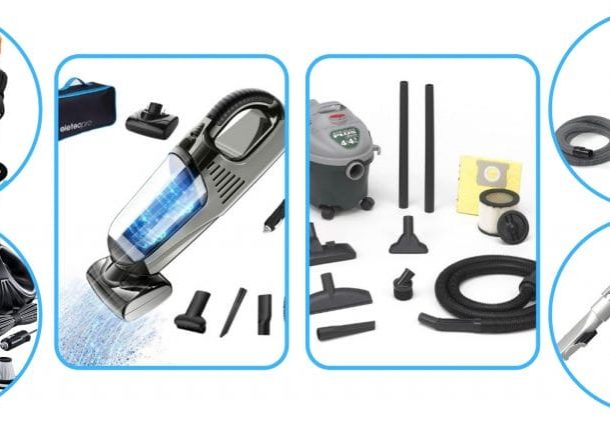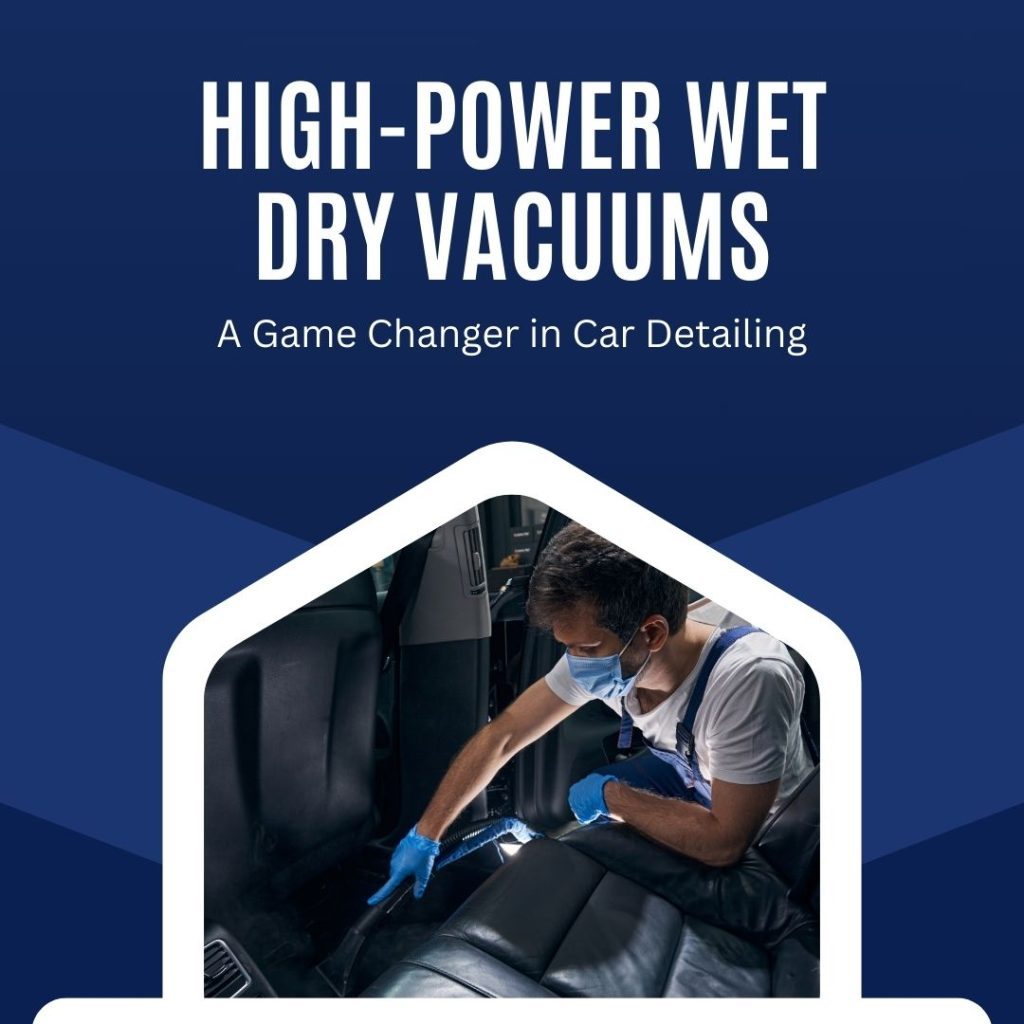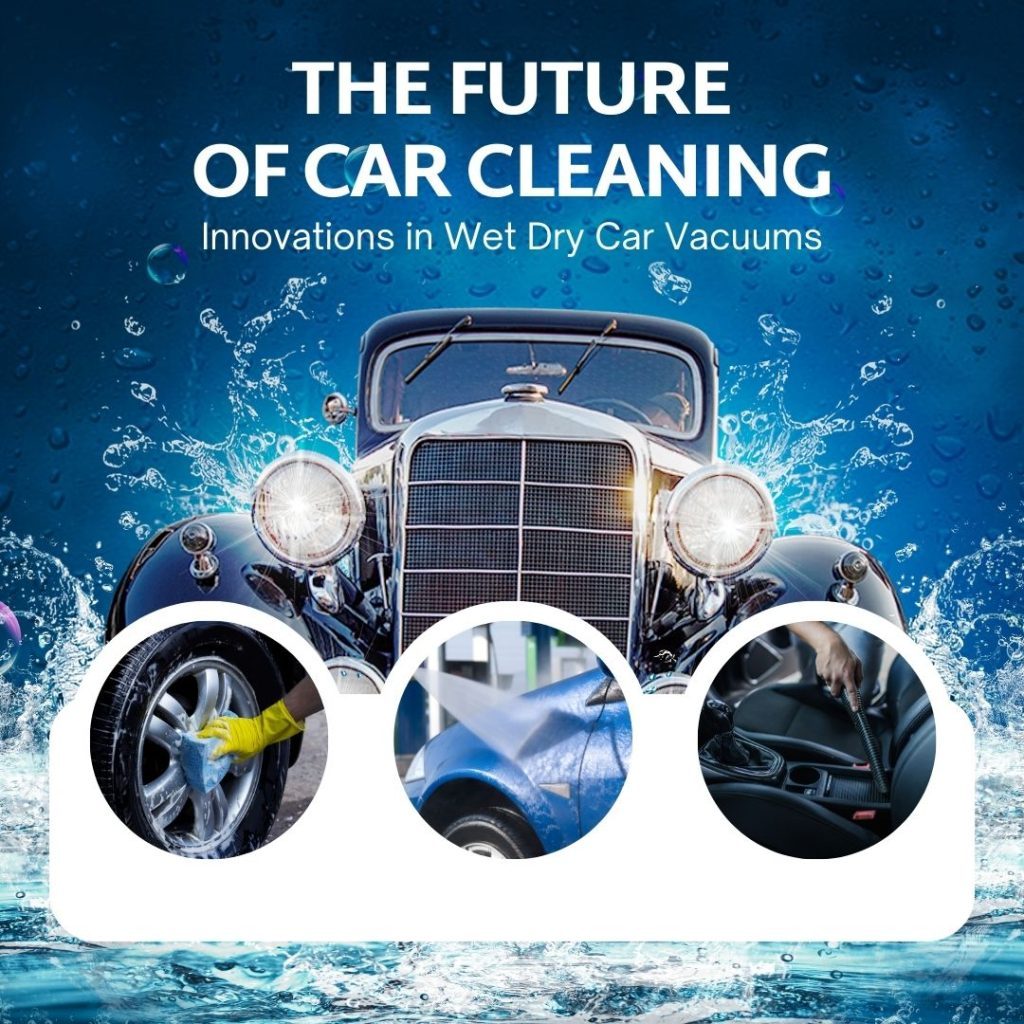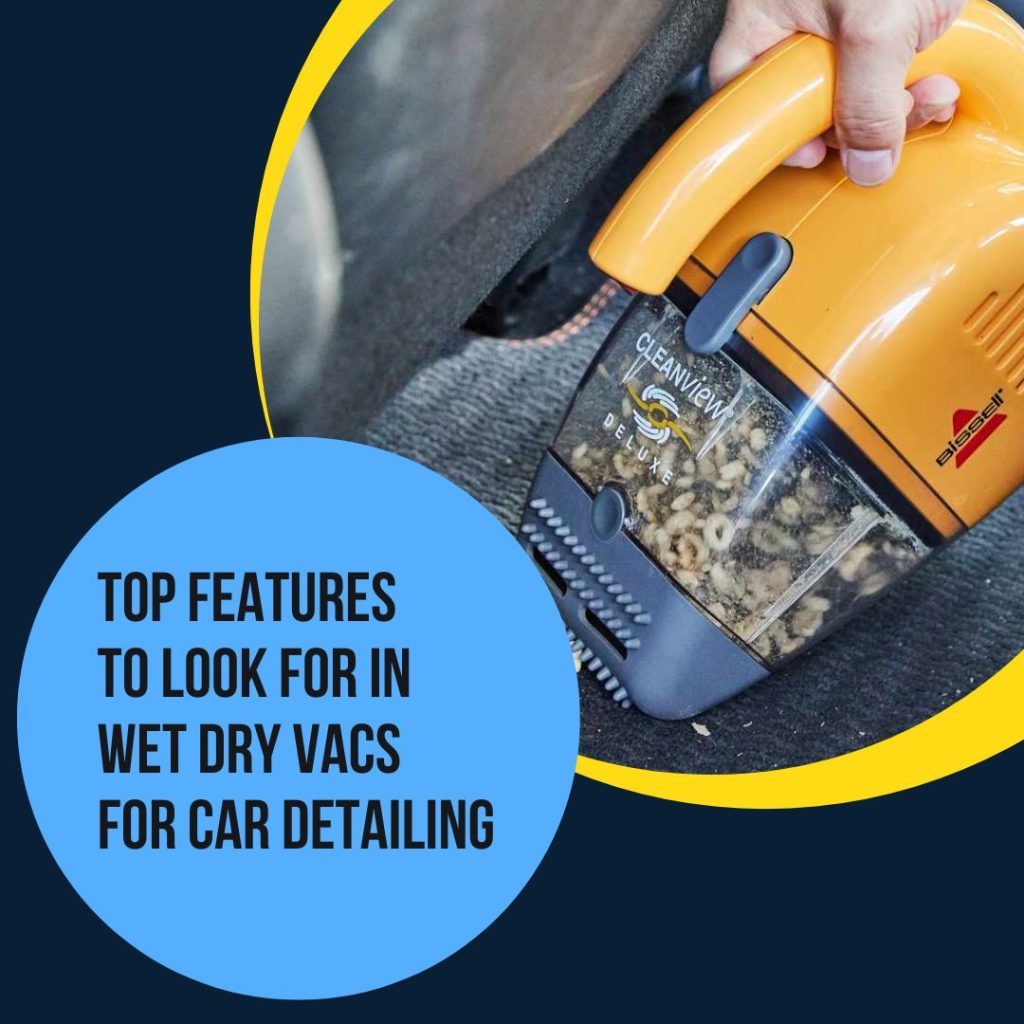Car detailing is not just a routine cleaning, but a deep and thorough process to restore and protect your vehicle, enhancing its appearance and longevity. This guide is designed to provide you with expert insights and step-by-step instructions on how to detail your car to perfection.
Detailing involves a combination of tools and techniques that go beyond simple washing and vacuuming. From the exterior paint to the tiniest interior crevice, every aspect of your car requires specific attention and care. Whether you’re a car enthusiast looking to maintain your prized possession or a beginner aiming to extend the life of your vehicle, understanding the right tools and methods is key.
Buckle up and prepare to embark on a journey to achieve the ultimate shine and protection for your car. Whether you’re diving into this as a weekend project or looking to broaden your detailing knowledge, this guide is your first step towards mastering the art and science of car detailing.
Essential Tools for Car Detailing: A Comprehensive Guide
Car detailing is an art that requires precision, patience, and the right set of tools. It’s about going beyond a simple wash to give your car a show-quality level of cleanliness and polish. Whether you’re a professional or a dedicated DIY enthusiast, knowing the essential tools for car detailing can significantly enhance your efficiency and results. This guide will walk you through the crucial tools needed for detailing, including the versatile wet dry vacuum, and explain how each contributes to a spotless, well-maintained vehicle.
1. Car Wash Soap and Buckets
Importance: A quality car wash soap is the foundation of any detailing job. Unlike regular detergents, it’s formulated to cut through automotive grime without damaging paint or finishes.
Use: Pair it with a bucket (or two for the two-bucket method) to keep your clean and dirty water separate, minimizing the risk of scratching your paint with debris.
2. Microfiber Towels
Importance: Microfiber towels are a safe and effective way to dry your vehicle, apply products, and buff surfaces without leaving scratches or lint.
Use: Use different colors to avoid cross-contamination between various cleaning products and parts of the car.
3. Detailing Brushes
Importance: Brushes come in various sizes and stiffness for different detailing needs, from scrubbing tires to dusting air vents.
Use: Use softer brushes for interior and delicate areas and stiffer brushes for tires and exteriors.
4. Clay Bar
Importance: A clay bar removes embedded surface contamination that washing alone can’t.
Use: Glide it across the surface of your car after washing to pick up minute particles for a truly smooth finish.
5. Dual Action Polisher
Importance: A dual action polisher is less aggressive than a rotary buffer but highly effective in removing minor scratches and swirls.
Use: It’s ideal for applying wax and polish evenly without risking paint damage.
6. Wet Dry Vacuum
Importance: A wet dry vacuum is invaluable for interior detailing. It can tackle both dry dust and debris as well as liquid spills.
Use: Use it to keep the interior spotless, from fabric seats and carpets to hard-to-reach nooks.
7. Pressure Washer
Importance: A pressure washer can remove dirt and grime from your vehicle’s exterior quickly and with less water than a hose.
Use: It’s particularly useful for pre-washing and in combination with foam cannons for an effective clean.
8. Foam Cannon
Importance: When attached to a pressure washer, a foam cannon covers the car in a thick, sudsy foam, providing lubrication to prevent scratching during washing.
Use: It helps in breaking down dirt and grime before hand washing.
9. Wax and Sealants
Importance: Protective layers like wax or sealants are essential for protecting the paint and giving it a lasting shine.
Use: Apply after cleaning and polishing to lock in the shine and protect against elements.
How These Tools Contribute to Effective Detailing
Effective car detailing is all about precision and protection. Each tool has a specific role that contributes to the overall cleanliness and preservation of the vehicle. Using the right tools not only makes the job easier but also prevents damage to sensitive surfaces. For instance, microfiber towels and brushes are gentle on the car’s exterior and interior, preventing scratches that can occur from using harsher materials.
The wet dry vacuum exemplifies the importance of having versatile tools. It’s indispensable for interior detailing, capable of handling both dry and wet messes, which means you can effectively clean up everything from dust and sand to spilled liquids without changing equipment.
Pressure washers and foam cannons work together to ensure the vehicle is as clean as possible before you even start the hand-washing process, reducing the risk of dirt particles scratching the paint. Meanwhile, the clay bar, polisher, and wax are all about refining and protecting the finish, ensuring that your car doesn’t just look clean but also has a protective layer against the environment.
Understanding Wet Dry Vacs: A Vital Tool in Car Detailing
Wet dry vacuums, often simply referred to as wet-dry vacs, are a versatile and powerful cleaning tool essential in various settings, from home and garden to workshops and, notably, car detailing. This article aims to demystify wet dry vacs, exploring what they are, how they work, and their indispensable role in the car detailing process.
What are Wet Dry Vacs?
Wet dry vacs are specialized vacuum cleaners capable of handling both dry debris and liquid spills. Unlike regular vacuums, they are designed with robust interiors that withstand the rigors of sucking up wet substances without damaging the unit.
Components:
- Motor: Designed to provide substantial suction power.
- Canister: A large bin that holds both liquids and solids, usually with a capacity measured in gallons.
- Filter: Special filters that can handle both dry and wet materials without needing to be changed.
- Hose and Nozzles: Durable and flexible, designed for various cleaning tasks.
How Wet Dry Vacs Work
Wet dry vacs operate on a straightforward principle. When you turn on the vacuum, the motor generates suction that pulls air, along with any debris or liquid, into the hose, then into the canister. What makes these vacuums unique is their ability to separate liquids and solids, often depositing them into different compartments or handling them in a way that doesn’t damage the internal workings of the vacuum.
Role in Car Detailing
Interior Cleaning: Car interiors can benefit greatly from wet dry vacuums. These robust machines can easily clean up common messes found in vehicles, such as:
- Dry Debris: Including dirt, sand, pet hair, and crumbs.
- Liquid Spills: From water and sodas to more problematic substances like oil or grease.
Versatility: The various attachments and hoses make wet dry vacs ideal for reaching into tight spaces in car interiors, under seats, and in crevices where dirt and debris accumulate.
Efficiency: Their powerful suction makes quick work of dirt and liquids, reducing cleaning time and ensuring a more thorough clean.
Safety and Protection: Unlike regular vacuums, wet dry vacs are designed to handle moisture without short-circuiting or becoming damaged, making them safe for use in vehicles, which often involve a mix of dry and wet cleaning tasks.
Choosing the Right Wet Dry Vac for Car Detailing
When selecting a wet dry vac for car detailing, consider the following:
- Size and Capacity: Depending on the frequency and extent of your cleaning needs, choose a size that’s convenient yet sufficient.
- Power: Look for a model that provides enough suction power for heavy-duty cleaning but is also adjustable for more delicate tasks.
- Portability: A lightweight and portable design makes it easier to maneuver around and inside your car.
- Attachments: Ensure it comes with a variety of nozzles and brushes suited for different surfaces and areas in your car.
Maintenance and Care
To keep your wet dry vac in top condition, regularly:
- Empty and clean the canister after use, especially if you’ve picked up liquids.
- Check and clean filters to maintain suction power and prolong the life of your vacuum.
- Inspect hoses and attachments for any wear and tear and replace them if necessary.
Step-by-Step Guide to Car Detailing: Perfecting Your Vehicle Inside and Out
Car detailing is the process of thoroughly cleaning, restoring, and finishing a car to achieve a show-quality level of detail. It’s a meticulous step-by-step procedure that goes beyond a regular car wash to clean and protect the vehicle, both inside and out. This guide provides you with detailed instructions on exterior and interior detailing, including the techniques, tools, and tips necessary to achieve professional results.
Part 1: Exterior Detailing
- Washing
- Tools & Materials: Car wash soap, microfiber towels, hose or pressure washer, wash mitt.
- Technique: Use the two-bucket method—one for soapy water and the other for rinsing your mitt. Start from the top of the car and work your way down, rinsing thoroughly to avoid soap residue.
- Claying
- Tools & Materials: Clay bar, lubricant.
- Technique: After washing, glide a clay bar over the paint to remove embedded contaminants. Keep the surface lubricated to avoid scratching.
- Polishing
- Tools & Materials: Dual action polisher, polishing pads, compound.
- Technique: Apply polish to remove fine scratches, swirls, and oxidation. Work in sections and use even pressure.
- Waxing
- Tools & Materials: Car wax, foam applicator, microfiber cloth.
- Technique: Apply a thin, even layer of wax in a circular motion. Allow it to haze and then buff off with a microfiber towel for a protective shine.
- Wheels and Tires
- Tools & Materials: Wheel cleaner, brushes, tire dressing.
- Technique: Clean the wheels with a dedicated brush and wheel cleaner. Apply tire dressing for a clean, dark finish.
- Windows and Trim
- Tools & Materials: Glass cleaner, trim restorer.
- Technique: Clean windows with a streak-free glass cleaner. Use a trim restorer to bring back the color and protection of plastic trims.
Part 2: Interior Detailing
- Vacuuming
- Tools & Materials: Wet dry vacuum, attachments.
- Technique: Remove floor mats and thoroughly vacuum the seats, carpets, and hard-to-reach areas. Use brush attachments for delicate surfaces.
- Shampooing Carpets and Upholstery
- Tools & Materials: Carpet cleaner, upholstery cleaner, brushes.
- Technique: Apply cleaner and use a brush to agitate the dirt. Use a wet-dry vacuum to remove the dirt and excess moisture.
- Cleaning Hard Surfaces
- Tools & Materials: All-purpose cleaner, microfiber towels, brushes.
- Technique: Wipe down all hard surfaces, including dashboard, center console, and door panels. Use brushes for vents and tight spots.
- Leather Care
- Tools & Materials: Leather cleaner, leather conditioner.
- Technique: Clean the leather with a soft brush or microfiber towel. Apply conditioner to protect and keep the leather supple.
- Windows
- Tools & Materials: Glass cleaner, microfiber towel.
- Technique: Clean the interior side of the windows with a streak-free cleaner. Avoid overspray on other surfaces.
- Odor Removal and Air Freshening
- Tools & Materials: Odor eliminator, air freshener.
- Technique: Use an odor eliminator to remove any unpleasant smells. Place an air freshener for a lasting fresh scent.
Tips for Successful Detailing
- Always work in the shade: Direct sunlight can dry products too quickly, leading to streaks and spots.
- Use the right products: Invest in high-quality detailing products designed for specific tasks.
- Regular maintenance: Frequent detailing will keep your car looking great and can prevent dirt and grime from becoming embedded.
Advanced Techniques in Car Detailing: Elevating Your Vehicle’s Aesthetics
For car enthusiasts and detailing professionals, basic washing, waxing, and vacuuming are just the start. Advanced car detailing involves specialized tools and techniques designed to achieve the highest level of cleanliness, restoration, and protection. This article explores some of these advanced methods and how to effectively use high-power and eco-friendly wet dry vacuums, ensuring your vehicle isn’t just clean, but impeccably detailed with a focus on longevity and environmental responsibility.
Advanced Tools and Methods
1. Paint Correction
Paint correction involves removing imperfections from a vehicle’s finish, including swirl marks, scratches, and oxidation.
Utilize dual action or rotary polishers with varying grades of polishing pads and compounds. It requires experience and patience, as improper techniques can damage the paint.
2. Ceramic Coatings
Ceramic coatings provide a hard, durable layer of protection on top of the paint, offering superior protection against contaminants and UV rays.
After thoroughly cleaning and prepping the paint, apply the ceramic coating evenly. It requires a controlled environment and precise application.
3. Engine Bay Detailing
A clean engine bay can improve the aesthetic of your vehicle and make it easier to identify and fix leaks or other issues.
Use degreasers, brushes, and microfiber towels. Protect sensitive electrical components and ensure the engine is cool before beginning.
4. Headlight Restoration
Over time, headlights can become yellowed and cloudy, reducing visibility.
Use sanding discs to remove the outer layer of oxidation, then polish and seal the headlights for a clear finish.
High-Power Wet Dry Vacuums in Car Detailing
1. Choosing a High-Power Wet Dry Vacuum
Look for models with high suction power, durable construction, and a range of attachments specifically for detailing, including brushes and crevice tools.
2. Effective Use in Car Detailing
Utilize the vacuum for both pre and post-detailing cleanup. Use it to remove loose debris before washing and to clean up after wet work, such as shampooing carpets or seats.
Eco-Friendly Wet Dry Vacuums
1. Benefits of Eco-Friendly Vacuums
Eco-friendly vacuums typically use less power and are designed to have a reduced environmental impact, without compromising on effectiveness.
2. Using Eco-Friendly Vacuums Effectively
Focus on maintaining your vacuum well to extend its life. Use reusable filters when possible, and dispose of waste responsibly, especially when dealing with chemicals or car fluids.
Advanced Techniques: Tips and Tricks
Precision Detailing
- Use a paint gauge: To ensure you don’t remove too much clear coat during paint correction.
- Detailing Clay: Regularly use detailing clay for a contaminant-free surface before applying waxes or sealants.
Efficiency
- Use an air compressor: An air compressor can be used to blow out dirt and debris from hard-to-reach areas, especially before vacuuming.
- Steam Cleaning: Steam cleaners can effectively clean and sanitize interior surfaces without harsh chemicals.
Protection
- Window Tinting: Consider professional window tinting not just for aesthetics but also to protect your interior from UV rays.
- Protective Films: Apply clear protective films to vulnerable areas of your car, like the front bumper, to protect against chips and scratches.
Maintenance and Care of Detailing Tools: Ensuring Longevity and Efficiency
In the realm of car detailing, the longevity and effectiveness of your work greatly depend on the condition of your tools. Proper maintenance and care of detailing tools not only extend their lifespan but also ensure they perform at their best. This article focuses on the maintenance of various detailing tools, with special attention to wet dry vacuums, along with providing storage and handling advice to keep your detailing kit in top condition.
General Maintenance Tips for Detailing Tools
1. Regular Cleaning
- Importance: Removes residues and prevents build-up that can affect performance.
- Tip: After each use, clean your tools thoroughly. For example, wash mitts and microfiber towels should be washed with a mild detergent and dried completely.
2. Inspection and Repair
- Importance: Identifies wear or damage early to prevent tool failure.
- Tip: Regularly inspect all tools for any signs of damage or wear. Replace or repair parts as necessary, especially for mechanical tools like polishers.
Focusing on Wet Dry Vacs
1. Filter Maintenance
- Importance: A clean filter ensures strong suction and prevents dust from escaping.
- Tip: Regularly check and clean the filter according to the manufacturer’s instructions. Replace it if it’s worn or damaged.
2. Canister Cleaning
- Importance: Prevents mold growth and unpleasant odors, especially after picking up liquids.
- Tip: After using the vac for wet spills, empty and clean the canister with a mild detergent, then dry it completely before storage.
3. Hose and Attachments Care
- Importance: Maintains effective suction and accessibility.
- Tip: Regularly check for blockages or damage. Clean the interior of the hose with a long brush and soapy water if necessary.
Storage Advice for Detailing Tools
1. Proper Organization
- Importance: Prevents loss and damage and keeps tools readily accessible.
- Tip: Use a dedicated storage area or system for your tools. Shelving units, cabinets, or toolboxes can help organize and protect your equipment.
2. Environmental Considerations
- Importance: Extends the life of tools by protecting them from adverse conditions.
- Tip: Store tools in a cool, dry place out of direct sunlight. Ensure the area is clean and free from dust and moisture.
3. Security
- Importance: Prevents theft and unauthorized use.
- Tip: If your tools are stored in a garage or another accessible place, ensure they are securely locked up when not in use.
Special Handling Advice
1. Electrical Tool Care
- Importance: Prevents electrical issues and extends the lifespan of powered tools.
- Tip: Store power cords neatly coiled and away from foot traffic. Avoid exposing electrical tools to moisture and always unplug them before performing any maintenance.
2. Chemical Product Storage
- Importance: Prevents spills, contamination, and degradation of products.
- Tip: Keep chemicals in their original containers with labels intact. Store them upright in a stable, temperature-controlled environment.
3. Safety Equipment
- Importance: Ensures personal safety during detailing and maintenance tasks.
- Tip: Always wear appropriate safety gear, such as gloves and goggles, when maintaining your tools or using chemicals. Keep a first aid kit readily accessible in your storage area.
Innovations and Future Trends in Car Detailing
The car detailing industry is continuously evolving, driven by advances in technology and changing consumer preferences. Innovations are not just enhancing the quality and efficiency of detailing but also pushing the boundaries of what can be achieved. This article explores the future trends in car detailing, with a special focus on the innovations in wet dry vacuums and how these developments are set to revolutionize the industry.
Cutting-edge Technology in Car Detailing
1. Nano-Technology Coatings
Description: Nano-coatings are becoming more prevalent, offering superior protection and longevity compared to traditional waxes and sealants.
Future Impact: Expect even more durable and long-lasting formulations, making vehicles easier to clean and more resistant to scratches and environmental damage.
2. Automated Detailing Robots
Description: Robotics and automation are entering the detailing space, promising precision cleaning and efficiency.
Future Impact: While still in the early stages, automated systems could standardize quality and reduce the time and labor required for detailing tasks.
3. Eco-Friendly and Sustainable Products
Description: As environmental concerns grow, so does the development of eco-friendly detailing products and methods.
Future Impact: Look for an increase in biodegradable cleaners, waterless wash systems, and other sustainable practices becoming standard in the industry.
Innovations in Wet Dry Vacuums
1. Smart Technology Integration
Description: Wet dry vacuums are beginning to incorporate smart technology, including automatic suction adjustment, programmable settings, and remote operation.
Future Impact: This will allow for more efficient cleaning, with machines that can adapt to different types of debris and conditions, providing a more tailored detailing experience.
2. Enhanced Filtration Systems
Description: Advanced filtration systems are being developed to capture finer particles and allergens, improving the air quality and cleanliness of the vehicle interior.
Future Impact: These improvements will be particularly beneficial in creating a healthier environment within cars, an important aspect as consumers become more health-conscious.
3. Portability and Design Innovations
Description: New designs are focusing on making wet dry vacuums more compact, lightweight, and easier to maneuver.
Future Impact: Enhanced portability will make it easier to reach every nook and cranny of a vehicle, ensuring a more thorough clean without the physical strain.
4. Battery Technology and Power Efficiency
Description: Battery-operated wet dry vacuums are improving, with longer life and more powerful suction.
Future Impact: As battery technology advances, expect cordless models to become more prevalent, offering greater convenience and flexibility in detailing work.
Preparing for the Future
As these innovations continue to develop, professionals and enthusiasts in the car detailing industry should stay informed and adaptable. Embracing new technologies and methods can provide a competitive edge and improve overall results. Additionally, as consumers become more knowledgeable and expectations rise, offering the latest in detailing technology and trends will be key to success.
The Ultimate Buying Guide: Features to Look for in Wet Dry Vacs
When it comes to maintaining a clean and pristine car interior, few tools are as versatile and effective as a wet dry vacuum. Whether you’re dealing with everyday dirt and debris or unexpected spills, a good wet dry vac is an essential component of any car detailing arsenal. But with so many models on the market, how do you choose the right one? This buying guide is designed to help you understand the key features to look for when selecting a wet dry vacuum for your car detailing needs.
Key Features to Consider
1. Suction Power
- Importance: The heart of a wet dry vac’s performance is its suction power, which is typically measured in air watts or peak horsepower.
- What to Look For: A higher rating generally means better suction, which translates to more effective dirt and liquid removal.
2. Tank Capacity
- Importance: The tank capacity determines how much liquid or debris the vacuum can hold before needing to be emptied.
- What to Look For: Consider the size of your typical job and choose a capacity that minimizes interruptions but isn’t overly bulky for your storage and usage needs.
3. Filter Type
- Importance: Filters trap dust, allergens, and small particles, preventing them from recirculating into the air.
- What to Look For: Look for high-quality filters suited for both wet and dry messes. Some vacuums also offer HEPA filters for improved air quality.
4. Portability
- Importance: Ease of movement is crucial, especially when working around and inside vehicles.
- What to Look For: Lightweight designs, caster wheels, or carrying handles can all enhance portability. Cordless models offer the ultimate in maneuverability.
5. Hose Length and Attachments
- Importance: The hose and attachments determine the versatility of the vacuum in reaching tight spots and effectively cleaning various surfaces.
- What to Look For: A longer hose and a variety of nozzles (such as crevice tools and brushes) will provide greater reach and adaptability.
6. Durability and Construction
- Importance: A well-built vacuum will withstand the rigors of regular use and last longer.
- What to Look For: Durable materials, a robust design, and positive user reviews can indicate a vacuum’s quality and durability.
7. Noise Level
- Importance: Excessive noise can be a nuisance, especially in residential areas or when working for extended periods.
- What to Look For: Some vacuums are designed to operate more quietly while still providing powerful suction. Check the decibel rating and customer reviews regarding noise.
8. Additional Features
- Importance: Extra features can enhance the vacuuming experience and provide added convenience.
- What to Look For: Things like blower functions, onboard storage for accessories, and automatic shut-off when the tank is full can be beneficial.
Eco-Friendly Car Detailing: Sustainable Practices for Your Vehicle
In an age where environmental consciousness is more than a trend, it’s a responsibility, eco-friendly car detailing has emerged as a significant practice for vehicle enthusiasts and professionals alike. This article highlights the importance of eco-friendly practices in car detailing, offering insights into how sustainable methods not only benefit the planet but also maintain the pristine condition of your vehicle.
The Importance of Eco-Friendly Practices in Car Detailing
1. Reducing Environmental Impact
Water Conservation: Traditional car washing methods can use up to 100 gallons of water per wash. Eco-friendly detailing practices, such as waterless car washes or using rinseless solutions, drastically reduce this consumption.
Chemical Runoff Prevention: Many conventional car soaps and cleaners contain chemicals harmful to the environment. Eco-friendly products are biodegradable and non-toxic, significantly reducing the risk of soil and water pollution.
2. Enhancing Vehicle Longevity and Safety
Gentle on Surfaces: Eco-friendly cleaning agents are often gentler on your car’s surfaces, reducing the risk of damage over time and maintaining the vehicle’s integrity and value.
Healthier Interior Environment: Using non-toxic and natural products for interior detailing ensures a healthier environment inside your car, free from harmful residues that can affect you and your passengers.
3. Economic Efficiency
Cost Savings: Many eco-friendly detailing practices reduce water and product usage, leading to significant savings over time. Additionally, sustainable tools and products often last longer.
DIY Solutions: Eco-friendly detailing often involves simple, DIY solutions that can be made from household items, reducing the need for expensive, specialized products.
Implementing Eco-Friendly Practices in Car Detailing
1. Waterless and Rinseless Washing
Description: Waterless car wash products encapsulate dirt and grime, allowing you to safely wipe your car clean without a hose. Rinseless solutions require a minimal amount of water and no rinsing afterward.
Benefits: Saves water and is ideal for areas with water restrictions or for those without access to a hose.
2. Eco-Friendly Cleaning Products
Description: Look for cleaners, waxes, and polishes made from natural, biodegradable ingredients.
Benefits: These products are less harmful to the environment and human health while still providing excellent results.
3. Microfiber Towels
Description: Microfiber towels are not only highly effective at cleaning and drying your vehicle but are also reusable and durable.
Benefits: Reduces waste and the need for disposable products like paper towels.
4. Steam Cleaning
Description: Steam cleaning uses heated vapor to lift dirt and stains from the car’s interior and exterior surfaces.
Benefits: It’s highly effective, reduces water usage, and avoids chemicals altogether.
5. Sustainable Power Sources
Description: Consider using detailing equipment powered by renewable energy sources or ensuring your power source (like your home or shop’s electricity) comes from renewable sources.
Benefits: Reduces carbon footprint and promotes the use of sustainable energy.
Conclusion
The journey through the “Ultimate Guide to Car Detailing: Tools and Techniques” equips you with the knowledge and insights necessary to transform your vehicle with precision and care. From understanding the essential tools and innovative wet dry vacuums to mastering interior and exterior detailing techniques, you now have a comprehensive roadmap at your fingertips. Embrace these practices to not only elevate the aesthetic appeal of your vehicle but also protect its value and longevity. Remember, effective detailing is an art that combines patience, skill, and the right tools. With this guide, you’re well-prepared to tackle any detailing challenge and ensure your vehicle shines brilliantly on every road it travels. Happy detailing!

